 PETÉN AND THE MAYA CIVILIZATION PETÉN AND THE MAYA CIVILIZATION |
You are intrigued by deep forests, awesome Maya cities and intense biodiversity, don't forget to visit the region of Petén. This, the largest region in the country, holds innumerable treasures in its 36,000 square kilometers. The dense, tropical forests extend into the neighboring countries of Mexico and Belize. The eight national parks and biological reserves found in Petén attest to the biodiversity of the exotic tropical flora and fauna.
Petén's tropical ecosystem has over 800 species of trees, 57 species of reptiles, and 500 species of birds. Tapirs, peccaries and jaguars still roam the emerald depths of the forest as they have for hundreds of years.
As well as its mesmerizing natural beauty, it boasts several towns and villages worth a good visit. Take a bit of advice: If you're planning on traveling in this region then give yourself leeway on your return flight. What are a few more days?
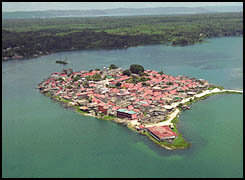
Your first stop should be Flores. This jewel of a town is unlike any other in the country. An island rising out of a lake with cobblestone streets that climb with every turn. Whether its on your way in or out, give yourself at least two to three days in Flores. You'll find it a great base for traveling in the area. Many of the Maya ruins in the area, including Tikal, can be seen in day trips. The travelers eager for visiting sites off the beaten track can take camping trips offered by local tour operators.
Lodging is not a problem here. There are plenty of hotels in Flores, as well as in the neighboring towns found on the shores of Lake Petén Itzá. Santa Elena is closest to Flores and is connected to the island by a causeway.
If you're looking for ecotours pay a visit to CINCAP (Centro de Información de la Naturaleza, Cultura y Artesanía del Petén). Aside from a permanent informative exhibition, CINCAP offers thorough information on Petén and ecotours available in the region.
Opposite Flores, on the far northern shore is the small town of San Andrés. A Spanish school operates here and not only offers one-on-one instruction but also gives students the chance to work in conservation programs in the area. Lodging with a local family is arranged for the duration of the student's stay.
Lake Petén Itzá measures twenty miles in length and five in width. Boats for hire stay close to the causeway. Practice your Spanish and your bartering skills by hiring a boat for an excursion to the north shore of the lake and Tayasal. These ruins were once the last Maya strongholds against the Spanish. Petencito, a small park and zoo, is found on one of the many islands that dot the lake. For a rush of adrenalin, try the concrete water slides. The 90-meter length slide lets you pick up quite a bit of speed!
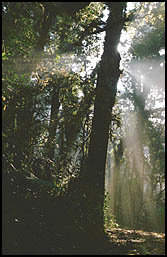
The Cerro Cahuí Reserve is found on the northeastern shore of the lake and is the perfect day trip. Three well-marked trails will take you through dense woods populated with ferns, breadnut trees and bromeliads. Although small in size, about 1,600 acres, it protects a large variety of animals and plants. Kingfisher, toucans, white-tailed deer and howler monkeys are just a few of the animals spotted here.
Part of the thrill of visiting Petén is seeing exotic animals in their natural habitat as well as standing under the emerald canopy. The northern area of Petén holds the Maya Biosphere Reserve. It was declared to be part of the UNESCO international biosphere reserve system in 1990. The biosphere reserve takes up almost 14% of the country's territory.
Since the area is a biosphere, activities are limited in the region to scientific investigation, ecotourism and education. Recent efforts in area conservation have led to the development of programs to aid locals in protecting the natural resources. Petén's residents are inextricably linked to the forest in which they live and it is natural that they derive their food from it. By taking ecotours in the area, travelers help the residents protect their environment while providing for their families and communities.
Petén is vast lowland forest. It is scarlet macaws and jaguars. It is silent cities rising out of the forest canopy. It is intimacy with nature. It is island towns and craggy caves. It is not to be missed.
 The Maya The Maya |
The Maya civilization was one of the grandest in the history of the world and the reason for its collapse is still shrouded in mystery. Archaeologists have discovered much about this grand people and have taken great strides in uncovering their lives and their traditions through the massive cities they left behind.
The Maya civilization was one of the grandest in the history of the world and the reason for its collapse is still shrouded in mystery. Archaeologists have discovered much about this grand people and have taken great strides in uncovering their lives and their traditions through the massive cities they left behind.
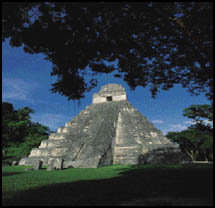
Visitors to Guatemala may experience many grand adventures during their stay, but topping the list will be visiting the silent Maya cities scattered throughout the country. From the astonishing Tikal to remote Naachtún, the Maya people lived scattered throughout this tropical country and held vast power over the region of Mesoamerica.
The Maya civilization spread out from northern Guatemala, Honduras, Belize and into Mexico's Yucatán Peninsula. The Maya civilization was held together through their culture rather than their politics, yet their influence was extensive. According to the history books, their artistic achievements surpassed those of their European contemporaries. Needless to say, one doesn't need a history book to appreciate the stunning beauty of their cities and temples and their arquitectural prowess.
Centuries before the birth of Christ, the Maya formed thriving settlements in the Guatemalan highland area and established trading routes over a vast area. Their Pre-Classic period lasted from 2,000 BC to AD 300. These early Maya were primarily farmers who raised beans, maize, squash, avocados and even pineapples in their scattered communities. When not tending the fields or hunting wild turkeys, both men and women gave time to artistic pursuits. The men made stone tools, carved both jade and wood and fashioned clay figurines. The women wove mats, baskets and textiles for use in daily life, as well as making ceramic cooking wares which bore painted decorations. | 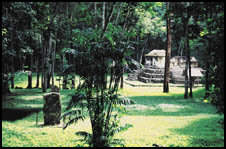
Maya leaders later led their people to the north into Petén and the Yucatán and settled there. It is in these areas that the Maya entered their Classic period between AD 300 and 900. They built imposing ceremonial cities such as Tikal, Quiriguá and El Mirador. Their arquitectural greatness was equalled only by their scientific achievements.
The complex Maya calendar and hieroglyphic writing system astounds today just as it did when the first archaeologists began their exploration of this lost world. Their grasp of mathematics and astronomy baffled the modern day scientists intent on discovering as much as they could about the Maya.
After the mysterious collapse that scientists believe came at about AD 900, the Maya moved north into the Yucatán Peninsula and remained here for the Post-Classic period from AD 900 to 1521. During the Spanish conquest in the 16th century, many descendants of the Maya had remained in the Guatemalan highlands. The Quiché and Cakchiquel were some of the first people to clash with the Spanish conquistadors.
There are many theories surrounding the disappearance of the Maya and the collapse of their grand cities, yet one thing remains true and constant. The Maya heritage lives on in Guatemala. Their traditions and achievements continue to enhance the lives of hundreds of thousands of travelers who visit their silent cities each year. The presence of the Maya is palpable in every indigenous group found in Guatemala today and their contribution is invaluable.
 Cancuén Cancuén |
This site was originally discovered in 1905 and was mistakenly given little archaeological importance. Today, through ongoing excavations, Cancuén is recognized as one of the most spectacular Maya cities ever discovered.
A little more than a year ago, a group of Guatemalan and international archaeologists entered the area between Alta Verapaz and Petén. The site of Cancuén was on their agenda. Although little was known about it, the experts had their suspicions. Finding one of the most astounding Maya sites ever discovered, their suspicions were confirmed.
The archaeological excavation is led by renowned archaeologists Dr. Arthur Demarest and Lic. Tomás Barrientos. They, in turn, lead a team made up of experts from Vanderbilt University and the Universidad del Valle de Guatemala.
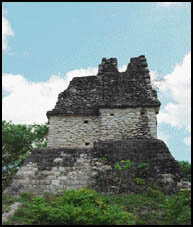
The site of Cancuén is also known as El Lugar de Serpientes (Place of Serpents) and it lies near the banks of the Río La Pasión near the border between Petén and Alta Verapaz. First to visit the site was Teobert Maler back in 1905 and ten years later, Sylvanus Morley began his investigations. The site remained lost to the jungle until 1967 when a research team from Harvard University began studying the site. More than 30 years later, the discovery of Panel 19 from Dos Pilas begins shedding light on the importance of Cancuén. The panel has been dated to approximately AD 4 and it relates the story of an alliance through marriage between the two cities.
In 1999, Cancuén's true importance in the Maya world is revealed under the exploratory investigations of Demarest and Barrientos. Recent discoveries indicate that Cancuén was a principal city in the Maya kingdom that spread throughout Petén's southwestern region. Cancuén, Tres Islas and Machaquilá were the primary cities with Tres Islas the first to hold total political power. It was later moved to Cancuén where it remained for almost three centuries. The power shifted to Machaquilá around AD 9 and it remained there until the decline of the Maya civilization.
Cancuén is believed to have thrived from AD 600 to 800. And the discovery of one of the largest palaces ever discovered attests to their strength and wealth. The Palace of Cancuén spreads out over 26,000 square meters. It has been determined that there are more than 150 rooms with ceilings rising to seven meters within the structure. As many archaeological sites, most of the palace remains buried beneath hundreds of years of jungle growth. According to Demarest, Barrientos and their team, it will take approximately 10 years and adequate funding to fully expose the palace and other buildings around the site.
Massive and intricately carved stelea have also been found detailing the history of the city of Cancuén, its rulers and inhabitants. Ceramic artifacts found on site give insight into the creative and artistic merits of these residents. Unique statuettes with bright colors and incredible detail have also been found.
More than 600 dwellings have been identified around the palace which leads the experts to believe that Cancuén boasted a healthy population of residents and thus made it a commercially-oriented settlement rather than a ceremonial center, such as Tikal. It is also believed that they used the nearby Río La Pasión as a port for the influx of visitors from other nearby cities such as Dos Pilas, Tikal and Kaminaljuyú.
As with many sites discovered in Guatemala, there is a community that lives quite near this stunning Maya city. In the small village of El Zapote, the Qeq'chí residents are given an important role in the preservation of this site and the natural resources surrounding it.
Demarest and team have begun the Cancuén Archaeological Project that will improve living conditions in the village of El Zapote by developing water wells, building a school and a clinic to dispense medicine and medical advice. A branch of the del Valle Rotary Club, Fundatec, is currently taking donations for the Cancuén Archaeological Project.
Also on the drawing board is the development of an ecotourism program that will allow visitors access to the site with lodging and food services provided by the community. Local residents will also be trained as guides to Cancuén. It is this concern and cooperation with the local community that brings Dr. Demarest, Lic. Barrientos and their team to the forefront of archaeological studies. Their concern for the local communities goes hand in hand with their work at the site.
 How to get there How to get there |
Daily flights run out of Guatemala City to Flores. If you have plenty of time on your hands then you can attempt driving from Guatemala City to Petén, but keep in mind that the road is long. Nevertheless, the true adventurer won't mind the long drive and by renting a 4WD vehicle, may visit off-road archaeological sites.
 Climate Climate |
Rainfall here is frequent throughout the year but lightens up considerably during the months of February on through April. Temperatures can be balmy on occasion but keep the rain gear handy. If you plan on being on forest trails, be sure to pack the insect repellent.
 Getting Around Getting Around |
Flores boasts several car rental agencies that offer the sturdiest of 4WD vehicles. These are best for visiting the sites generally found off the beaten track. The towns of San Benito and Santa Elena have taxi services but if it's just around the town, then take it easy and go on foot.
All these informations are provided by courtesy of Destination Guatemala and Sol y Luna |

